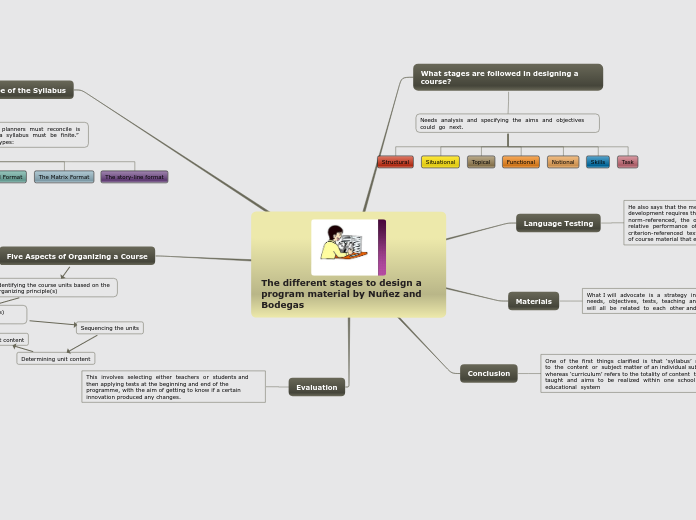
The different stages to design a program material by Nuñez and Bodegas
What stages are followed in designing a course?
Needs analysis and specifying the aims and objectives could go next.
Structural
Situational
Topical
Functional
Notional
Skills
Task
Language Testing
He also says that the method he advocates for test development requires the use of two different types of tests: norm-referenced, the ones intended to compare the relative performance of students to each other; and criterion-referenced texts intended to measure the amount of course material that each student has learned.
Materials
What I will advocate is a strategy in which students’ needs, objectives, tests, teaching and program evaluation will all be related to each other and to the materials
Conclusion
One of the first things clarified is that ‘syllabus’ refers to the content or subject matter of an individual subject, whereas ‘curriculum’ refers to the totality of content to be taught and aims to be realized within one school or educational system
Selecting the Shape of the Syllabus
“the basic dilemma which course planners must reconcile is that language is infinite, but a syllabus must be finite.” Next they present five possible types:
The Linear Format
The Modular Format
The Cyclical Format
The Matrix Format
The story-line format
Five Aspects of Organizing a Course
Identifying the course units based on the organizing principle(s)
Determining the organizing principle(s) (e.g.., themes, genres, tasks
Sequencing the units
Determining unit content
Organizing unit content
Evaluation
This involves selecting either teachers or students and then applying tests at the beginning and end of the programme, with the aim of getting to know if a certain innovation produced any changes.
